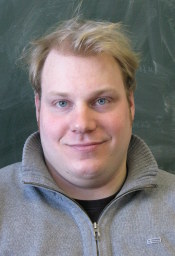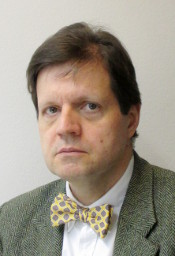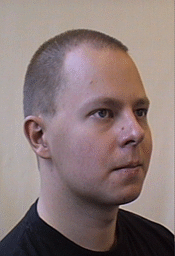Physical phenomena, such as heat transfer, deformation of bodies, fluid flow and electromagnetic phenomena, are often described with partial differential equations. Unfortunately, solving these equations analytically is possible only in some special cases. Finite element methods are numerical methods that produce approximations to these equations. In addition to being very popular in continuum mechanics, they are constantly gaining ground in new areas such as electromagnetism.
Finite elements are a strandard tool in industrial applications and the availability of several commercial programs makes them easily accessible to engineers. However, complex problems arising e.g. from multiphysical phenomena require a deep understanding of the mathematical foundation of the numerical methods.
Research topics
Finite element methods for plates
Plate models are used in a variety of everyday engineering applications ranging from bridge decks to micromechanical applications. However, the classical plate models present a number of problems regarding the stability and accuracy of the numerical solution, and special care must be taken when designing new finite element methods for these problems. Current research focuses on one hand on avoiding the locking phenomenon with an element as simple and effective as possible, and on the other on deriving practical a posteriori error estimators for the plate problem.
A rather new subfield is the study of plates made of composite materials, where the strong anisotropies of the material layers play a key role. This allows making structures stronger by optimizing the fibre structure while keeping the weight of the structure under control.
Finite element methods for soil mechanics
In soil mechanics, the main interest lies in the modelling of a fluid flow in a porous material. Common practical applications are for example groundwater and oil reservoir modelling. Emphasis of our current research is on applying finite element methods to parameter-dependent flow problems, such as the Brinkman equation. In particular, we focus on a posteriori error estimation and postprocessing schemes.
Finite element methods for shells and shell theory
While the asymptotic bending behavior of a plate at the limit of zero thickness is uniquely described by the well-known Kirchhoff model, the asymptotic character of the shell deformation varies diversely depending on the geometry of the shell, on the kinematical constraints and on the type of loading. This poses a serious challenge to the finite element model trying to adapt to the asymptotic behavior of the solution when the shell is thin as compared with the mesh spacing used.
Our research focuses on understanding of the asymptotic nature of shell deformation states from the numerical point of view. Both high- and low-order finite element methods are under investigation.
Finite element methods in electromagnetism
Finite element method is becoming a central modelling tool also in electromagnetics. The field has several challenges compared to the traditional applications of FEM, such as the high-frequency problem. Our research is mainly focused on the finite element analysis of the time-harmonic Maxwell equations. We are also interested in applying functional type a posteriori error estimates in this context.
Contact problems
Contact problems are present in many industrial applications ranging from a car tire touching the tarmac to alloy working. The construction of numerical models for contact phenomena is not completely clear. Research is focused on developing stable and robust computational methods to overcome the geometric nonlinearity.
Speech research
The human articulatory system is unique in the whole animal kindom since it is anatomically and neurally efficient enough to produce acrobatic manoeuvres of speech organs fast, without errors, and with minimal energy, yet the process responsible of human speech is not yet understood. Human speech research attempts to model this process mathematically. This involves many disciplines of applied mathematics, such as image- and signal processing, and finite element simulations in geometries obtained through MR imaging.
Personnel
Page content by: webmaster-math [at] list [dot] aalto [dot] fi




